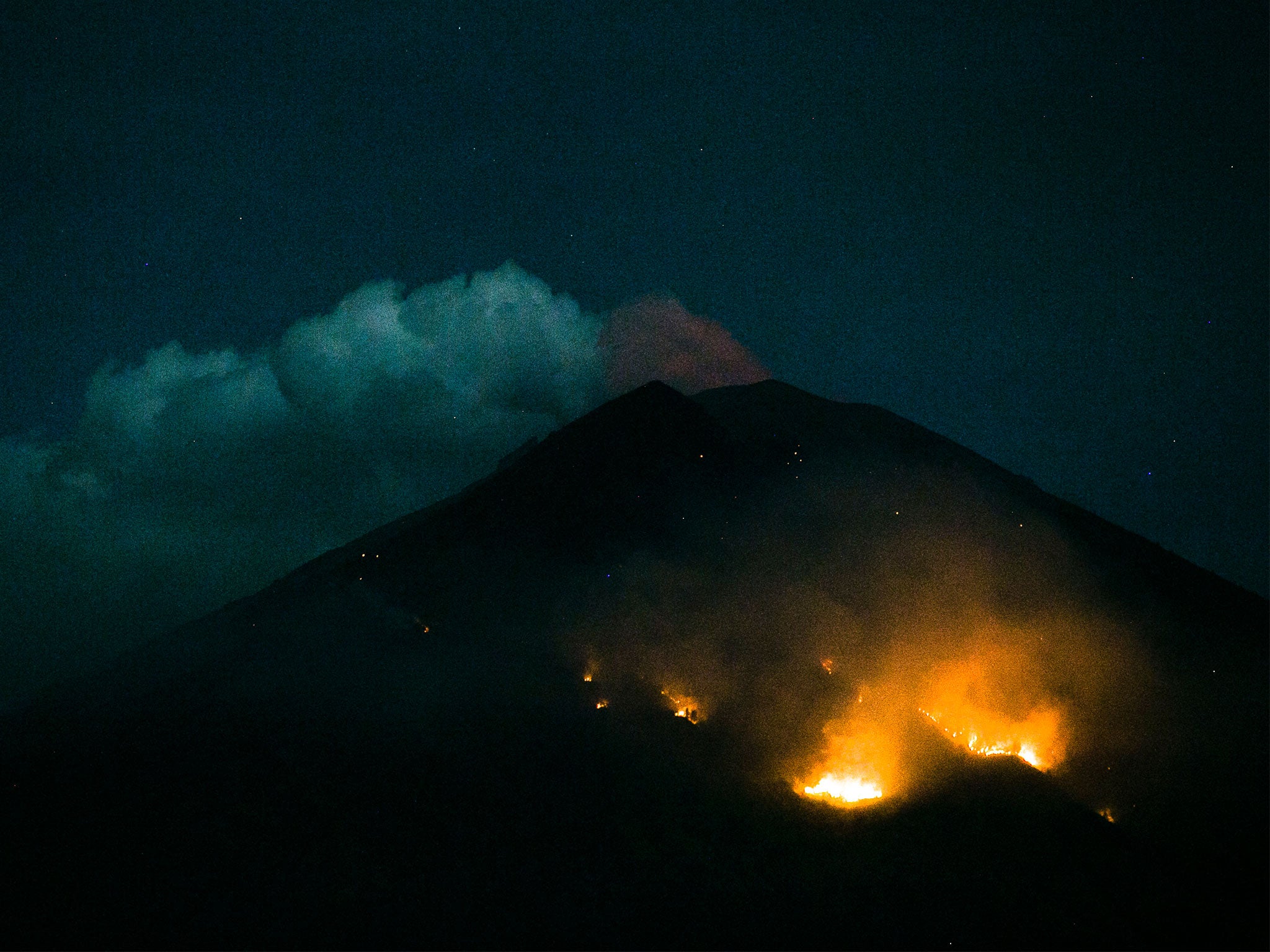Bali volcano: 'Flares of incandescent lava' shoot from Mount Agung after new eruption
Indonesian geological agency says alert level will not rise despite new flurry of activity at mountain

Your support helps us to tell the story
From reproductive rights to climate change to Big Tech, The Independent is on the ground when the story is developing. Whether it's investigating the financials of Elon Musk's pro-Trump PAC or producing our latest documentary, 'The A Word', which shines a light on the American women fighting for reproductive rights, we know how important it is to parse out the facts from the messaging.
At such a critical moment in US history, we need reporters on the ground. Your donation allows us to keep sending journalists to speak to both sides of the story.
The Independent is trusted by Americans across the entire political spectrum. And unlike many other quality news outlets, we choose not to lock Americans out of our reporting and analysis with paywalls. We believe quality journalism should be available to everyone, paid for by those who can afford it.
Your support makes all the difference.A volcano on the Indonesian island of Bali has erupted, sending a 2,000-metre high column of thick ash spewing into the air and chunks of lava tumbling down its slopes.
The Indonesian geological agency said a loud explosion was heard from Mount Agung just before 9pm local time, which lasted for more than seven minutes.
Scientists at a volcano monitoring post witnessed “flares of incandescent lava” reach 1.2 miles (2km) from the crater.
The agency said the alert level for Agung has not been raised and the exclusion zone around the crater remains at two-and-a-half miles (4km).
Last week, Bali’s international airport closed for half a day due to volcanic ash from the volcano, disrupting travel for tens of thousands on the tourist-friendly island.
Monday’s eruption was “strombolian” the geological agency said, the mildest type of explosive volcanic eruption.
It warned people living near rivers to exercise caution, particularly in wet weather, because of the risk of fast-moving flows of muddy volcanic debris.
The volcano, around 45 miles (70km) northeast of Bali’s tourist hotspot of Kuta, last had a major eruption in 1963, killing about 1,100 people.
However, it saw a dramatic increase in activity last year, forcing the evacuation of tens of thousands of people living on and around its slopes.
Activity had quietened by the early months of 2018 and authorities lowered its alert status from the highest level in February.
Indonesia, an archipelago of more than 250 million people, sits on the Pacific “Ring of Fire” and is prone to earthquakes and volcanic eruptions.
Government seismologists monitor more than 120 active volcanoes.
Additional reporting by Reuters
Join our commenting forum
Join thought-provoking conversations, follow other Independent readers and see their replies
0Comments